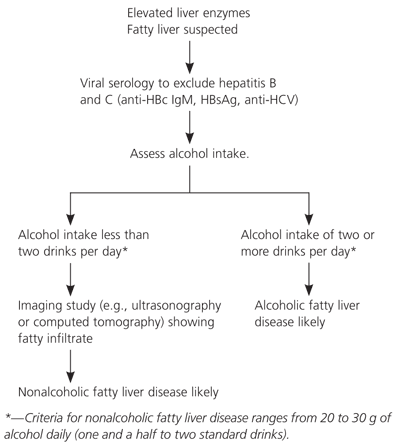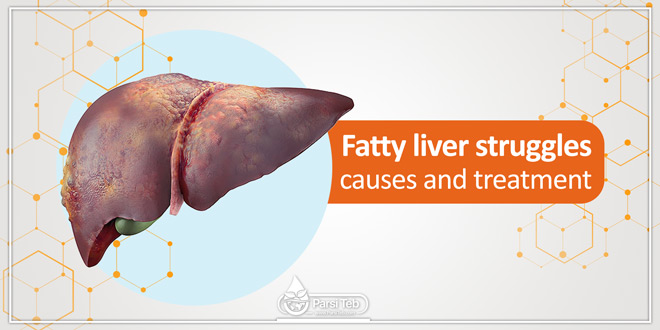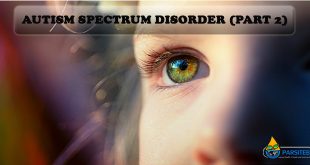fatty liver: Nonalcoholic fatty liver disease is a common condition associated with metabolic syndrome. It is the most common cause of elevated liver enzymes in U.S. adults, and is diagnosed after ruling out other causes of steatosis (fatty infiltration of liver), particularly infectious hepatitis and alcohol abuse. Liver biopsy may be considered if greater diagnostic and prognostic certainty is desired, particularly in patients with diabetes, patients who are morbidly obese, and in patients with an aspartate transaminase to alanine transaminase ratio greater than one, because these patients are at risk of having more advanced disease.

Possible Causes of Nonalcoholic Fatty Liver Disease
- Disorders of lipid metabolism
- Insulin resistance (metabolic syndrome [i.e., obesity, diabetes, hypertriglyceridemia, and hypertension]), lipoatrophy
- Medications (amiodarone [Cordarone], diltiazem [Cardizem], highly active antiretroviral therapy, steroids, tamoxifen [Nolvadex])
- Severe weight loss (jejunoileal bypass, gastric bypass, starvation)
- Refeeding syndrome
- Total parenteral nutrition
- Toxic exposure (e.g., organic solvents)
Adapted with permission from Sanyal AJ; American Gastroenterological Association. AGA technical review on nonalcoholic fatty liver disease. Gastroenterology 2002;123:1706.
Treatment
 Weight loss is the primary treatment for obese patients with nonalcoholic fatty liver disease. Medications used to treat insulin resistance, hyperlipidemia, and obesity have been shown to improve transaminase levels, steatosis, and histologic findings. However, no treatments have been shown to affect patient-oriented outcomes.
Weight loss is the primary treatment for obese patients with nonalcoholic fatty liver disease. Medications used to treat insulin resistance, hyperlipidemia, and obesity have been shown to improve transaminase levels, steatosis, and histologic findings. However, no treatments have been shown to affect patient-oriented outcomes.
Formerly called nonalcoholic steatohepatitis (NASH), nonalcoholic fatty liver disease now refers to a spectrum of diseases of the liver ranging from steatosis (i.e., fatty infiltration of the liver) to NASH (i.e., steatosis with inflammation and hepatocyte necrosis; Figure 1) to cirrhosis. Nonalcoholic fatty liver disease is the most common cause of elevated liver enzymes in adults in the United States1 and the most common cause of cryptogenic cirrhosis, which is cirrhosis that cannot be explained by hepatitis, alcohol abuse, toxin exposure, autoimmune disease, congenital liver disease, vascular outflow obstruction, or biliary tract disease.2 In the United States, estimates of the prevalence of nonalcoholic fatty liver disease range from 16 to 23 percent.3 However, in a recent population-based study, 31 percent of the 2,287 participants had steatosis diagnosed by nuclear magnetic spectroscopy.4 Patients who used alcohol were included in these numbers, but there was no difference in steatosis between patients using alcohol and patients who did not use alcohol. The prevalence of nonalcoholic fatty liver disease becomes greater with increasing body weight. Two thirds of patients with a body mass index (BMI) of 30 kg per m2 or greater, and more than 90 percent of patients with a BMI greater than 39 kg per m2, have steatosis.1 In the United States, up to 8.6 million persons who are obese may have steatohepatitis.1
Diagnosis

References
1. http://www.aafp.org/afp/2006/0601/p1961.html
2. Clark JM, Diehl AM. Nonalcoholic fatty liver disease: an underrecognized cause of cryptogenic cirrhosis. JAMA. 2003;289:3000–4.
3. Collantes R, Ong JP, Younossi ZM. Nonalcoholic fatty liver disease and the epidemic of obesity.Cleve Clin J Med. 2004;71:657–64.
4. Browning JD, Szczepaniak LS, Dobbins R, Nuremberg P, Horton JD, Cohen JC, et al. Prevalence of hepatic steatosis in an urban population in the United States: impact of ethnicity. Hepatology. 2004;40:1387–95.
5. Sanyal AJ. American Gastroenterological Association. AGA technical review on nonalcoholic fatty liver disease. Gastroenterology. 2002;123:1705–25.
6. National Cholesterol Education Program. Third report of the expert panel on detection, evaluation and treatment of high blood cholesterol in adults. National Heart, Lung and Blood Institute 2002. Accessed online August 24, 2005.
 Parsi Teb Physical and Mental Health Journal
Parsi Teb Physical and Mental Health Journal 




